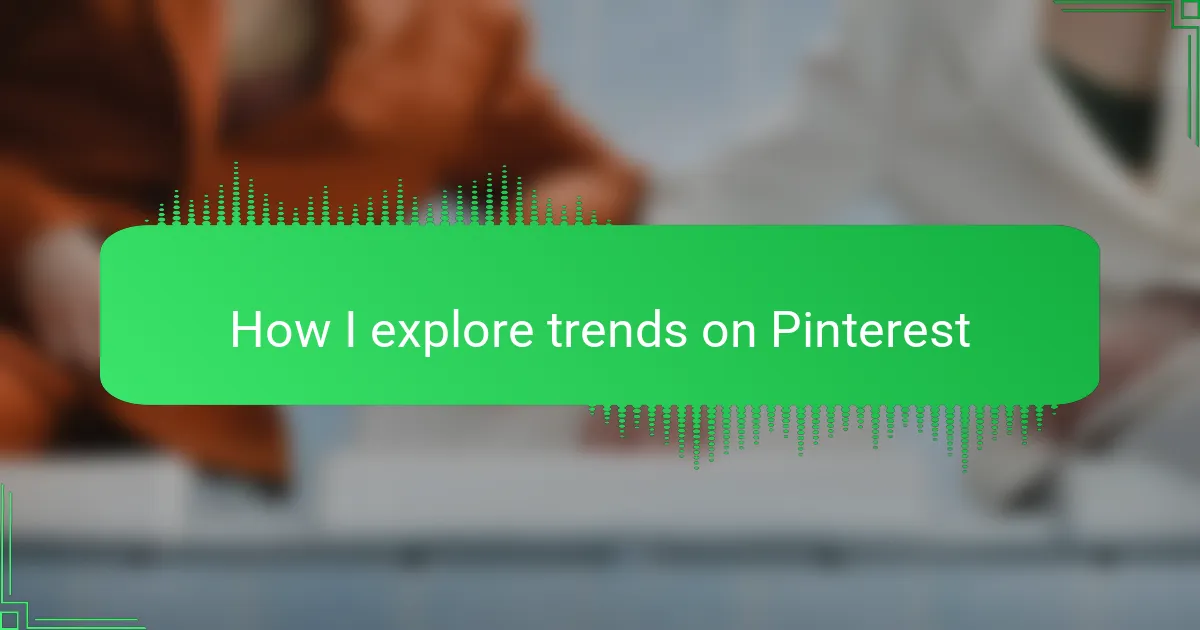Key takeaways
- Pinterest trends are influenced by cultural moods and can provide valuable insights for designing relevant t-shirt styles.
- Understanding the basics of t-shirt design, such as typography and color harmony, is crucial for creating impactful visuals.
- Organizing inspiration on Pinterest into themed boards enhances creativity and makes the design process more efficient.
- Adapting trends creatively rather than copying them fosters a unique brand identity and builds a stronger connection with consumers.
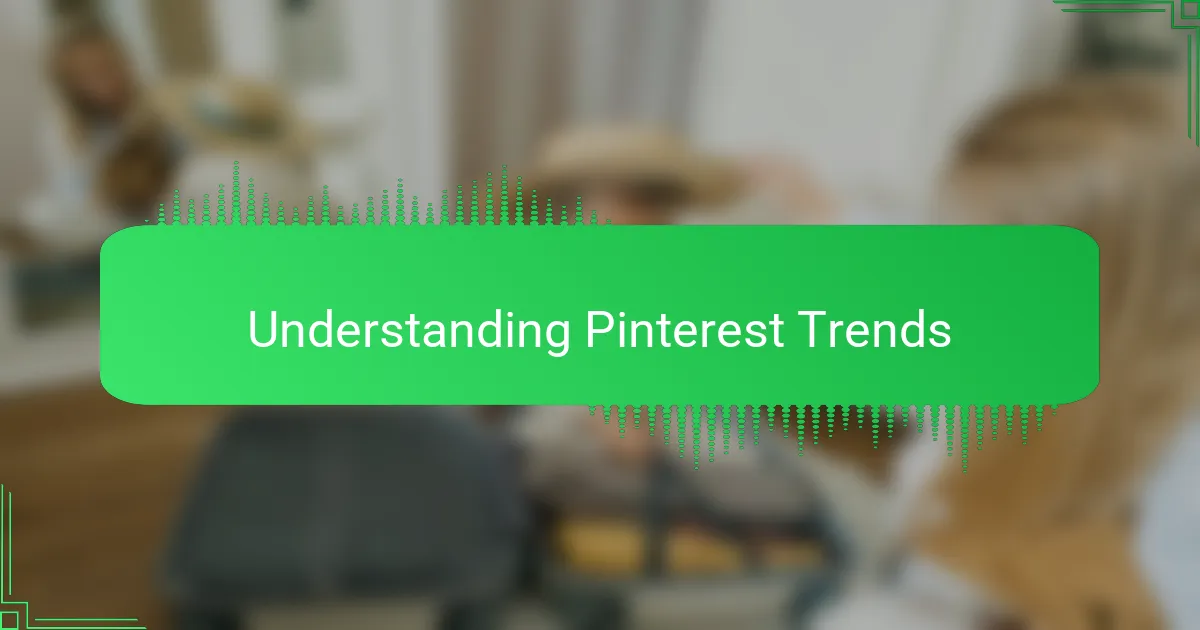
Understanding Pinterest Trends
Understanding Pinterest trends means recognizing how certain images, colors, and ideas become popular over time. From my experience in t-shirt design, I’ve noticed that trends on Pinterest often reflect broader cultural moods—sometimes bright and bold, sometimes minimalist and subtle. Picking up on these vibes early can really give your designs a fresh edge.
One thing I’ve learned is that Pinterest trends aren’t just fleeting fads; they often show patterns that evolve seasonally or around events. Watching these patterns has helped me anticipate what styles and themes will resonate with the audience, making my designs both relevant and appealing.
| Aspect | Pinterest Trends |
|---|---|
| Nature | Visual and theme-based, influenced by mood and culture |
| Duration | Can be seasonal or longer-lasting patterns |
| Impact on design | Guides color schemes, motifs, and styles |
| Personal insight | Trend awareness helps create timely, resonant t-shirt designs |
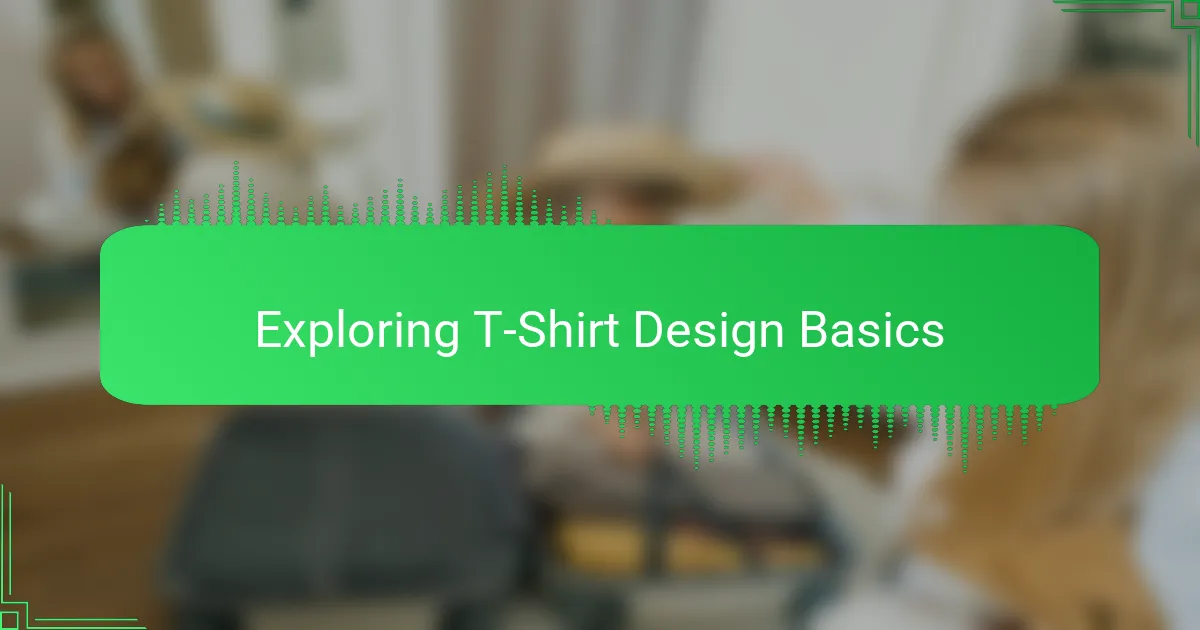
Exploring T-Shirt Design Basics
When I first started with t-shirt design, getting a solid grip on the basics felt like learning a new language. What really helped was focusing on simple elements like typography, color harmony, and composition—they are the foundational blocks that make or break a design. Have you ever noticed how just the right font paired with a complementary color scheme can completely transform a shirt’s vibe?
I’ve found that understanding the balance between bold graphics and negative space is crucial. Sometimes, less really is more, and the smartest designs aren’t cluttered but thoughtfully minimal. That simplicity can make a message pop and connect instantly with people, especially when viewed on Pinterest where visual impact is everything.
From my experience, the materials and printing techniques also subtly influence design choices. Knowing how a design will print on fabric helps me avoid surprises and ensures the final product feels just as good as it looks on screen. Do you think about the feel of a t-shirt when you create, or just the look? I’ve learned it’s both that count in creating designs that truly resonate.

Using Pinterest for Design Ideas
Browsing Pinterest for design ideas feels like stepping into a vast, ever-evolving gallery where inspiration never runs dry. I often find myself lost in curated boards filled with colors and patterns that spark fresh concepts for my t-shirt designs. Have you ever stumbled upon a pin that instantly changed the direction of your creative process? That moment of discovery is what makes Pinterest such a powerful tool.
What really draws me in is how easy it is to see a trend emerge visually—whether it’s a popular color palette or a recurring graphic style. Over time, I’ve developed a habit of saving pins that resonate emotionally or conceptually, creating a personal mood board that guides new projects. This way, I can track how ideas shift and adapt, helping me stay one step ahead instead of simply following.
Sometimes, the real value isn’t just in the images but in the stories behind them. Reading how designers describe their work or the cultural context attached to certain motifs adds depth to my own designs. Pinterest doesn’t just feed my eyes; it feeds my creativity by connecting me to a broader design conversation. Have you tried digging into the origin stories behind pins? It’s a surprisingly enriching experience.
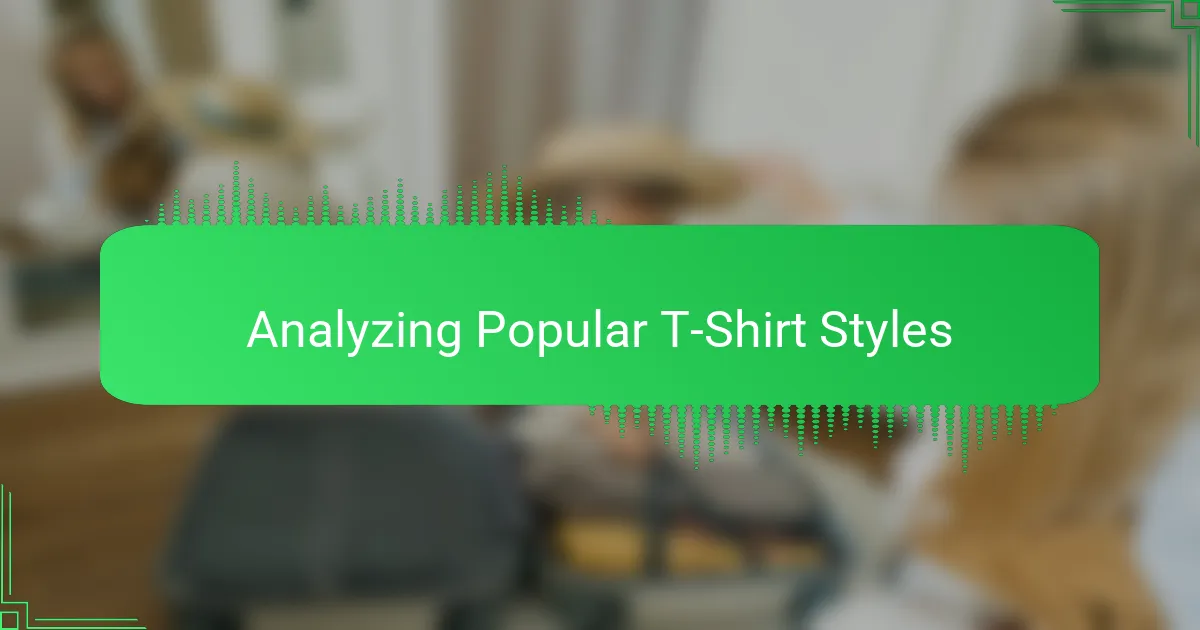
Analyzing Popular T-Shirt Styles
Analyzing popular t-shirt styles on Pinterest often reveals fascinating shifts in what captures people’s attention. I noticed that vintage-inspired tees frequently pop up alongside minimalistic designs, showing a blend of nostalgia and modern simplicity. From my experience, understanding these styles helps me tailor designs that connect emotionally with potential buyers.
| Style | Characteristics |
|---|---|
| Vintage | Retro graphics, faded colors, nostalgic appeal |
| Minimalistic | Simple designs, clean lines, limited color palette |
| Graphic Bold | Large prints, vibrant colors, statement messages |
| Typography-Focused | Creative fonts, motivational or funny text, design-centric |
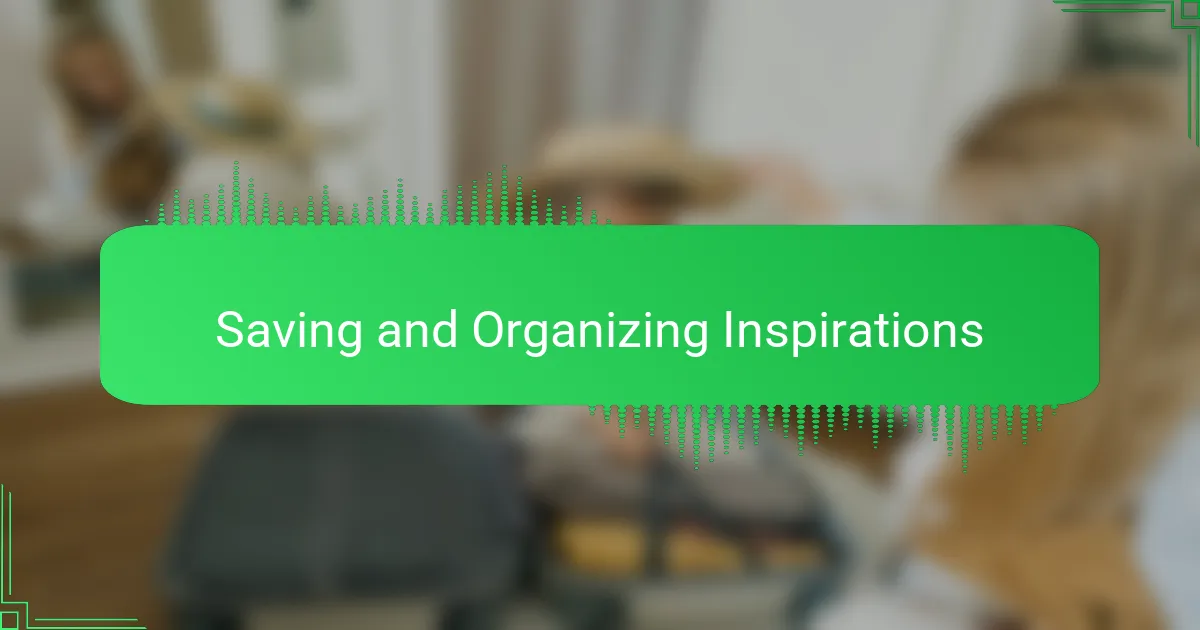
Saving and Organizing Inspirations
When I come across a t-shirt design that catches my eye on Pinterest, my first instinct is to save it immediately. It’s not just about bookmarking; it’s about capturing that spark of creativity before it slips away. Over time, I’ve realized that simply saving images in one big pile gets overwhelming, so organizing them became essential for me.
To keep my inspiration manageable and useful, I create specific boards based on themes, styles, or color palettes. This way, when I’m ready to design, I can dive straight into a well-curated collection rather than wading through hundreds of unrelated pins. Here’s how I stay organized:
- Create separate boards for categories like vintage, typography, minimalism, or seasonal trends.
- Use clear, descriptive titles for each board to find inspiration quickly.
- Add relevant notes or keywords to saved pins to remember what caught your attention.
- Regularly review and declutter pins that no longer inspire you.
- Group similar pins together to spot patterns and recurring design elements.
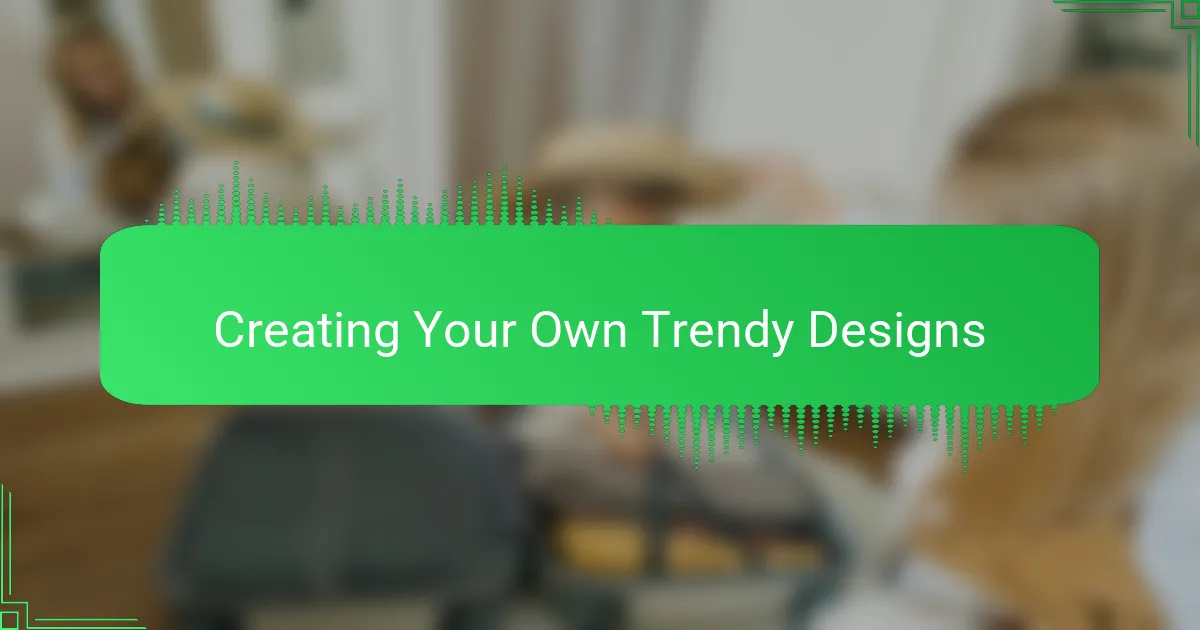
Creating Your Own Trendy Designs
Creating unique and trendy t-shirt designs comes from blending fresh ideas with what’s already catching attention on Pinterest. I’ve found that while it’s tempting to mimic popular styles outright, adding your own twist makes your work stand out. For example, mixing vintage typography with modern color palettes gave me a design that clicked with both nostalgic lovers and trendsetters.
| Design Approach | Impact on Trendiness |
|---|---|
| Copying popular designs | Short-term popularity, but lacks originality and long-term appeal |
| Adding personal twists | Creates uniqueness, resonates emotionally with audiences, and sustains interest |
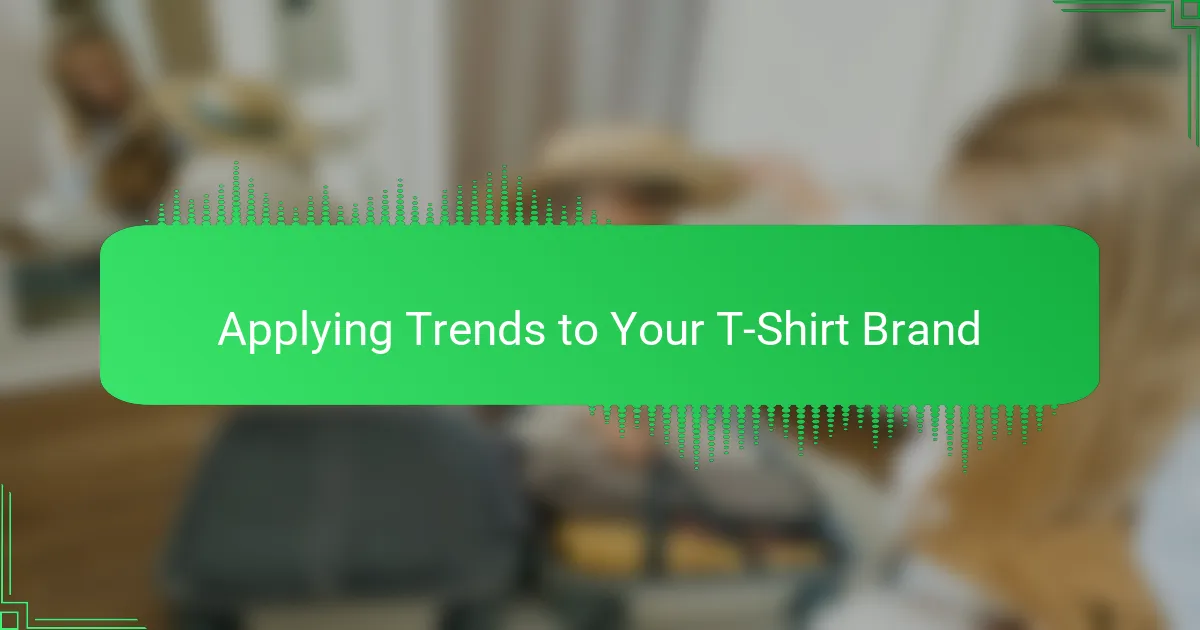
Applying Trends to Your T-Shirt Brand
Applying trends to your t-shirt brand is not just about copying what’s popular; it’s about interpreting those trends in a way that fits your style and speaks to your audience. I’ve found that when I tweak a trend to add a personal touch, my designs feel more authentic and resonate better with customers. This balance between trendiness and brand identity can really make your collection stand out.
Here’s a comparison of two approaches I use: following trends literally versus adapting them creatively.
| Approach | Effect on Brand |
|---|---|
| Copying Trends Literally | Can lead to generic designs, quick sales but limited brand loyalty |
| Adapting Trends Creatively | Builds unique brand identity and stronger connection with customers |
